Introduction
The rapid expansion of solar energy is reshaping landscapes and energy strategies around the world. However, the effective deployment of solar power is influenced by numerous factors that must be carefully considered to optimize land use and ensure sustainable development. This article delves into the critical elements that impact the land footprint of solar installations, including technology types, solar panel efficiency, and geographic variables.
It also explores topographical considerations, infrastructure proximity, and the innovative practice of agrivoltaics, which integrates solar energy production with agricultural activities. Additionally, the article addresses the challenges faced in solar farm development, such as land acquisition and regulatory hurdles, and offers solutions to overcome these obstacles. Through comprehensive analysis and strategic planning, the integration of solar energy into the grid can be effectively managed to meet both energy demands and environmental goals.
Factors Influencing Solar Land Use
'The area footprint of photovoltaic power setups is influenced by various essential elements, such as the kind of technology, panel effectiveness, and geographic position.'. 'Photovoltaic (PV) and concentrated renewable energy (CSP) technologies, for example, require different amounts of space to produce electricity.'. The effectiveness of photovoltaic modules is another factor; higher efficiency panels generate more power per unit area, thereby decreasing the space required. Geographic factors such as climate, topography, and local regulatory requirements also significantly influence the use of territory. For example, locations with greater sunlight exposure will need less space to reach the same power generation when compared to less bright areas. In Europe, where the effects of climate change are becoming more apparent, optimizing space utilization for renewable energy initiatives is crucial for attaining climate neutrality by 2050, as detailed in the European Green Agreement. This encompasses creative methods such as agrivoltaics, which merge sunlight generation with farming practices, thus optimizing space utilization and providing ecological and financial advantages.
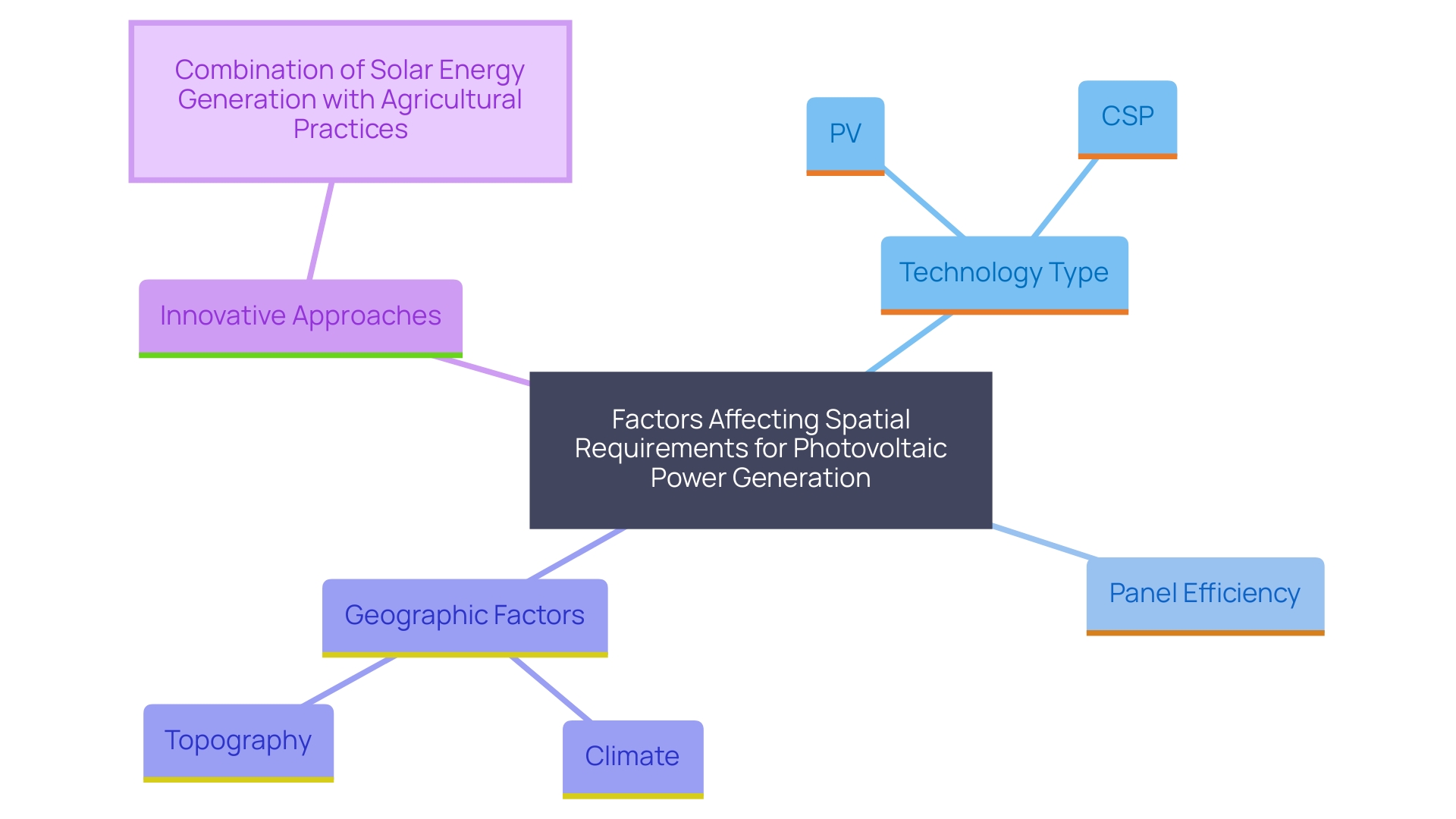
Land Suitability and Topography Considerations
'The appropriateness of land for energy projects depends on a variety of topographical and land characteristics.'. Optimal locations are generally level and devoid of barriers like trees, structures, or elevations, which can hinder panel performance by creating shadows. The Ohio Power Siting Board (OPSB) emphasized that photovoltaic installations should consider the environmental impact and strive for minimal adverse effects, aligning with state regulations and regional power grid plans.
Soil conditions and previous usage of the area also play significant roles in determining suitability. 'Brownfields, which are previously altered areas, often offer more advantageous conditions for renewable energy projects compared to pristine natural environments.'. 'This method corresponds with worldwide patterns, where obtaining extensive areas is a significant obstacle for renewable resource investments, especially in emerging countries.'.
India's National Solar Mission demonstrates successful large-scale deployment of sunlight energy, overcoming property acquisition challenges to supply electricity to almost its entire population by 2021. Such accomplishments highlight the significance of efficient territory utilization strategies and tactical planning in promoting renewable energy infrastructure.
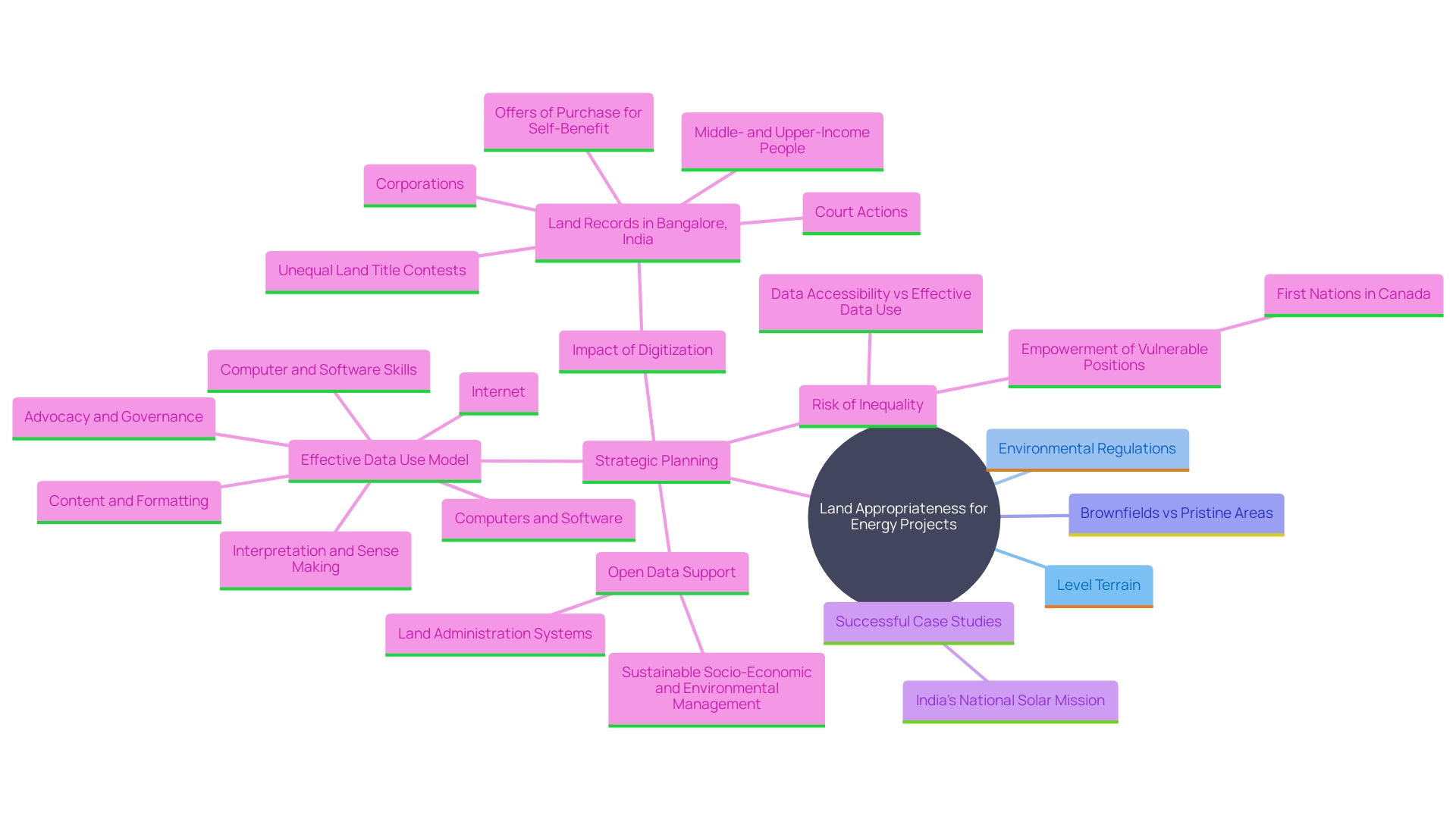
Infrastructure Proximity and Interconnection Costs
'The proximity of solar installations to existing infrastructure like transmission lines and access roads plays a crucial role in determining space requirements and costs.'. For example, sites near established electrical grids can significantly reduce the need for new infrastructure, thereby minimizing interconnection costs. According to Energy Innovation research, reforming the interconnection process and improving transmission planning can help manage these costs more effectively. Conversely, distant areas might necessitate significant expenditures in extra infrastructure to link to the grid, elevating both land use and complexity of the initiative.
Expanding our transmission capacity is not just about building new lines but also upgrading existing ones using grid-enhancing technologies (Gets) and advanced conductors. The current grid is already struggling to meet the escalating demand, with over 2 terawatts of renewable projects waiting to connect due to insufficient grid capacity. This situation is exacerbated by the increasing frequency of extreme weather events, which strain the existing infrastructure.
To address these challenges, proactive and holistic planning is essential. This includes modernizing transmission and distribution systems and leveraging solutions like demand response and virtual power plants. Such measures can support the grid as the load increases, ensuring affordable and dependable clean power delivery. As Mike O’Boyle, Rachel Goldstein, and Michelle Solomon observe, policymakers should keep investing in these sectors to maintain the clean power transition and achieve climate objectives.
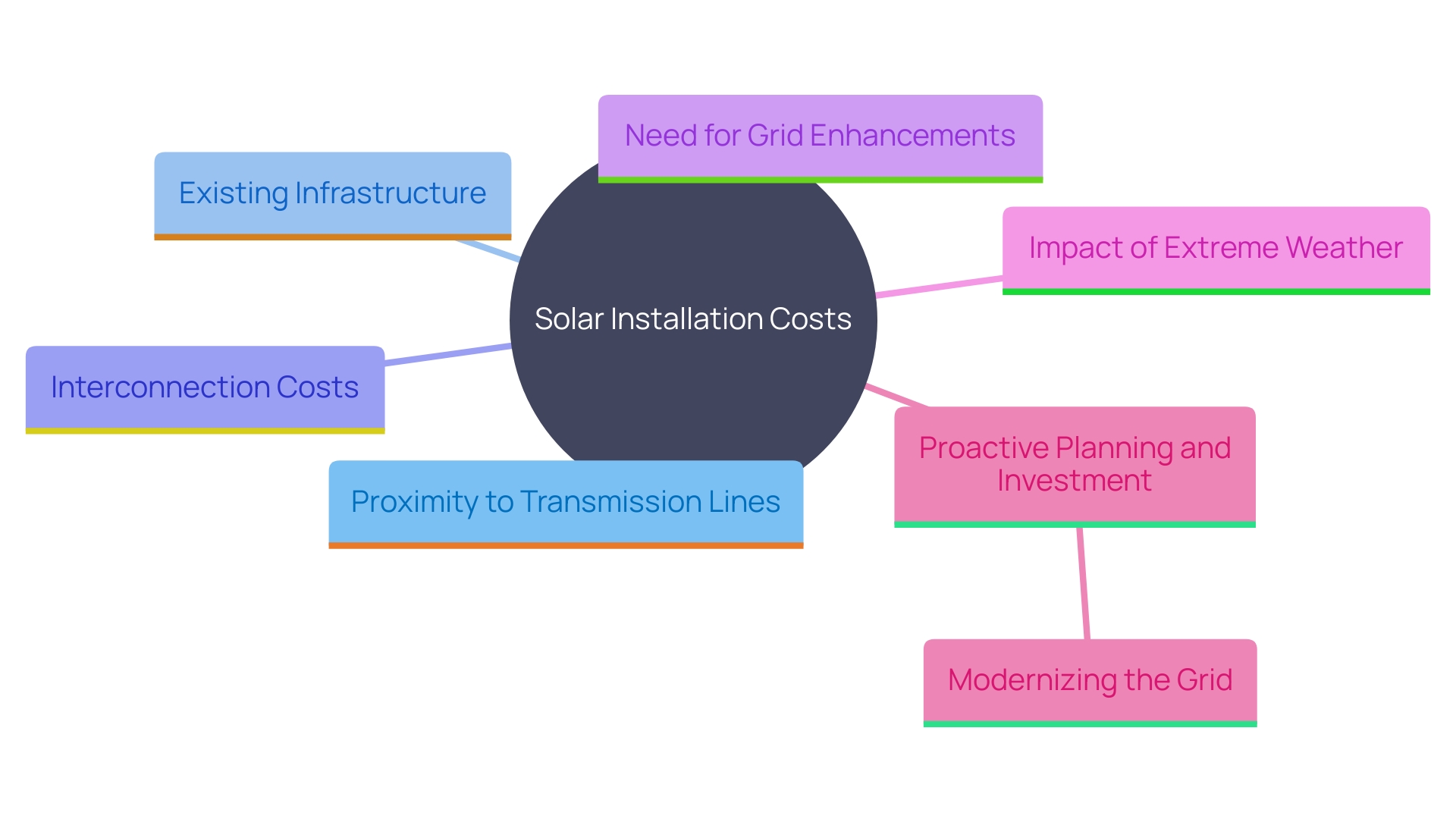
Agrivoltaics and Co-Located Solar and Agriculture
Agrivoltaics is a groundbreaking method that merges sunlight generation with farming activities on the same ground, establishing a dual-purpose strategy that optimizes area efficiency. By incorporating solar panels into farming areas, agrivoltaics boosts land productivity and offers extra income opportunities for growers, establishing it as a sustainable choice that meets both power and food production requirements.
'According to SolarPower Europe's Agrisolar Best Practice Guidelines, this approach can lead to increased crop yields, improved water usage, and enhanced biodiversity, providing socioeconomic benefits beyond just power generation.'. 'The Smart Villages and Kiima Foods initiative in Uganda is a prime example of how agrivoltaics can transform rural communities by providing reliable and sustainable electricity, which in turn supports agricultural activities and boosts farmers' incomes.'.
In states like Massachusetts, agrivoltaics is being acknowledged as a strategy to achieve climate and power objectives. 'The formation of committees to eliminate obstacles to agrivoltaic initiatives is an indication of its promise in establishing a mutually beneficial situation for clean power production and sustainable farming.'. The Massachusetts H.5060 Act, for instance, highlights the importance of agrivoltaics in achieving state priorities such as economic growth and climate resilience.
Public and private investments in agrivoltaic systems have been increasing, with significant research focusing on their adoption and impact on agricultural markets. This trend reflects a broader movement towards more resource-efficient and sustainable practices in using space, ensuring that both energy and food production can coexist harmoniously in the same area.
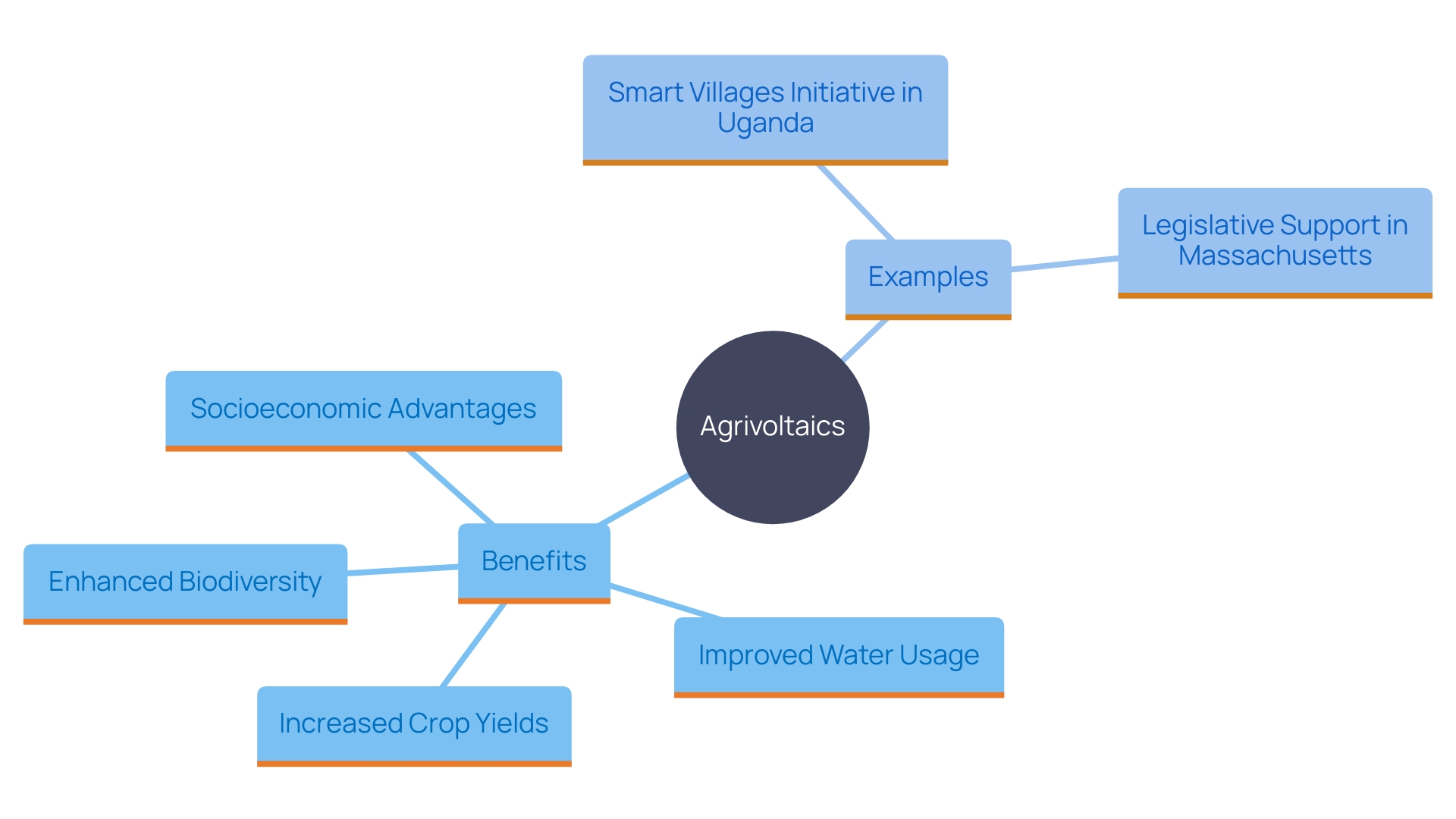
Challenges and Solutions in Solar Farm Development
The establishment of sun energy farms faces many obstacles, including property acquisition, regulatory barriers, and community resistance. Securing suitable land is particularly complex in densely populated or environmentally sensitive areas. For example, incorporating photovoltaic technology into environments through 'dual-use' methods such as agrivoltaics or placing them on previous mining locations ('brightfields') can assist in alleviating these difficulties. Regulatory requirements vary widely by region, necessitating thorough research and robust compliance strategies to meet legal criteria, such as minimizing adverse environmental impacts and ensuring consistency with regional power grid expansion plans. Engaging local communities early in the planning process is crucial. This can include proposing conservation and agricultural benefits, like healthier soil, which can foster community support and lead to more successful outcomes. Moreover, utilizing technological advancements and embracing group studies for interconnection processes can simplify development and lessen time spent in regulatory queues. By balancing technological innovation, regulatory compliance, and community engagement, solar projects can overcome significant hurdles and contribute effectively to sustainable energy goals.
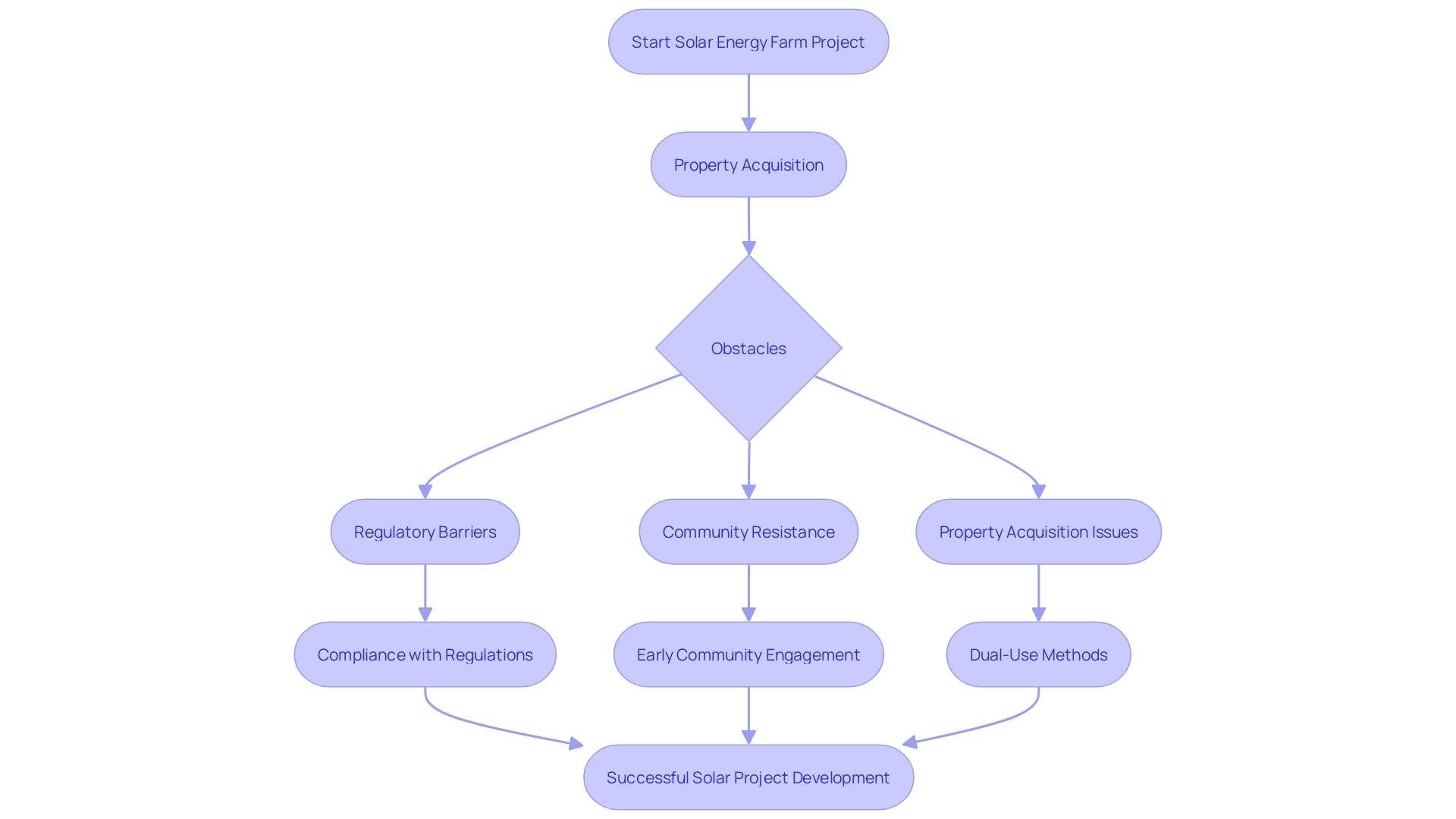
Conclusion
The deployment of solar energy is shaped by several critical factors that influence land use efficiency and sustainability. Key considerations include technology type, solar panel efficiency, and geographic conditions. Different technologies, such as photovoltaic (PV) and concentrated solar power (CSP), have varying land requirements, while higher efficiency panels optimize energy output per unit area.
Geographic elements, including climate and local regulations, also impact land suitability, highlighting the potential of innovative practices like agrivoltaics, which integrate solar production with agriculture.
Topographical features are essential in identifying suitable sites for solar projects. Ideal locations are typically flat and unobstructed, with previously disturbed lands often proving more favorable for development. Successful initiatives, such as India's National Solar Mission, illustrate the importance of effective land use policies and strategic planning.
Additionally, proximity to existing infrastructure significantly reduces interconnection costs and enhances project feasibility.
Agrivoltaics maximizes land productivity and provides additional income for farmers, aligning with climate and economic goals. However, challenges such as land acquisition and regulatory hurdles persist. Engaging local communities early in the planning process can foster support, while technological advancements can streamline development.
By addressing these factors, solar projects can make significant contributions to a sustainable energy future, ensuring that the transition to renewable energy meets environmental and societal needs.




